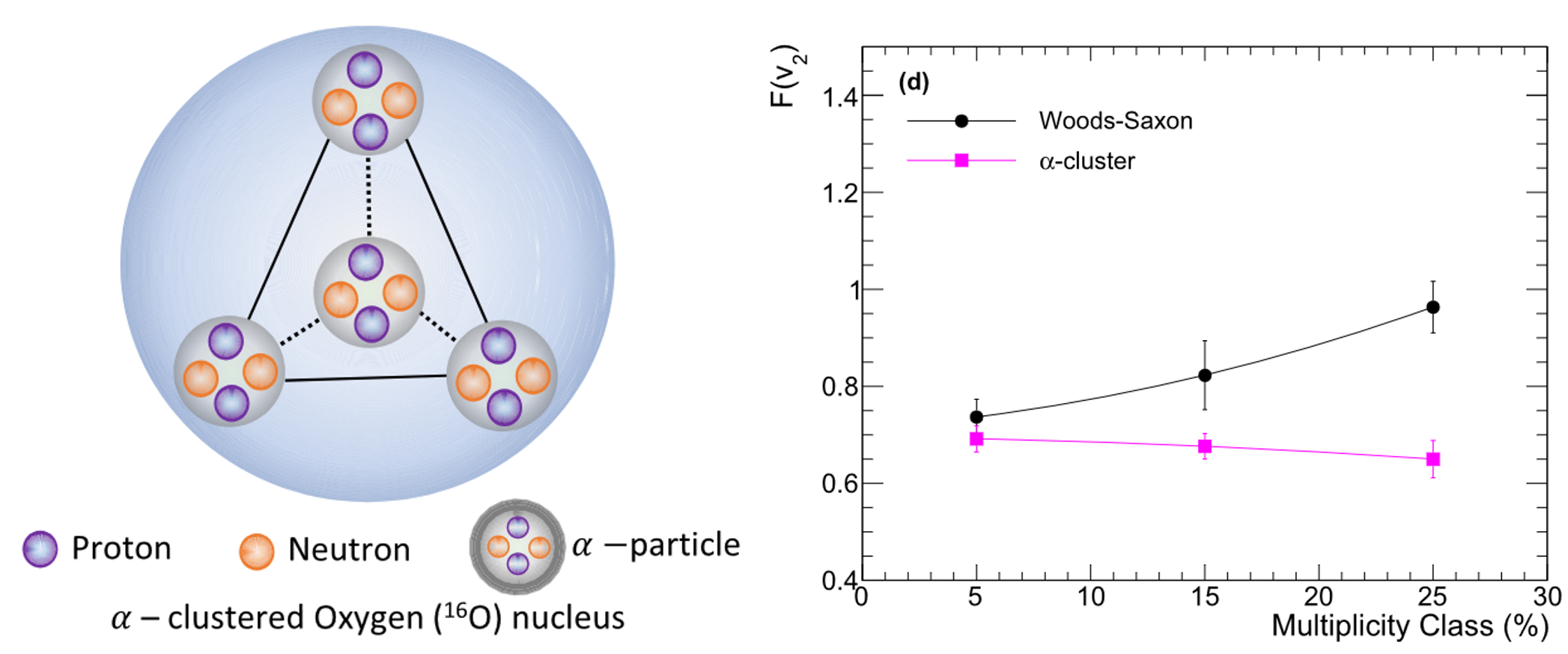
Effects of Alpha-clusters at TeV energies
(Phys.Lett.B 860 (2025), 139145)
Oxygen-16 nucleus can exhibit a tetrahedral geometry of alpha-particles (He-4). Effects of such a nuclear structure on the properties of nuclear matter formed at TeV energies are studied using the state-of-the-art IPGlasma+MUSIC+UrQMD model for the first time. The model predicts a unique centrality dependence of elliptic flow fluctuations when compared to collisions of Woods-Saxon type O-16 nuclei.

J/Psi and D0 reconstruction with Machine Learning
(Phys.Rev.D 109 (2024), 014005, Phys.Rev.D 110 (2024), 034017)
A new method to reconstruct J/Psi and D0 mesons using machine learning is proposed. The model can identify the signal candidates over the background with almost 99% accuracy. Further, the model utilizes topological variables, such as, the pseudoproper decay time, decay length, and DCA information to tag the propmt and non-prompt candidates at the track level.

Anisotropic flow with Deep Neural Network
(Phys.Rev.D 105 (2022), 114022, Phys.Rev.D 107 (2023), 094001)
A deep neural network is used to extract the anisotropic flow coefficients from particle kinematics such as pseudorapidity, azimuthal angle, transverse momentum etc. The model is trained with simulated heavy-ion collisions using a multi-phase transport model. The model successfully predicts the centrality, energy, collision system and particle species dependence of anisotropic flow coefficients with high accuracy.